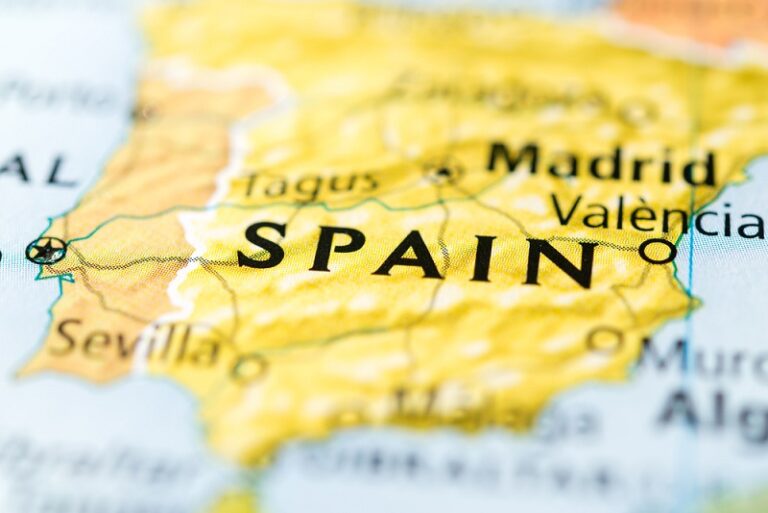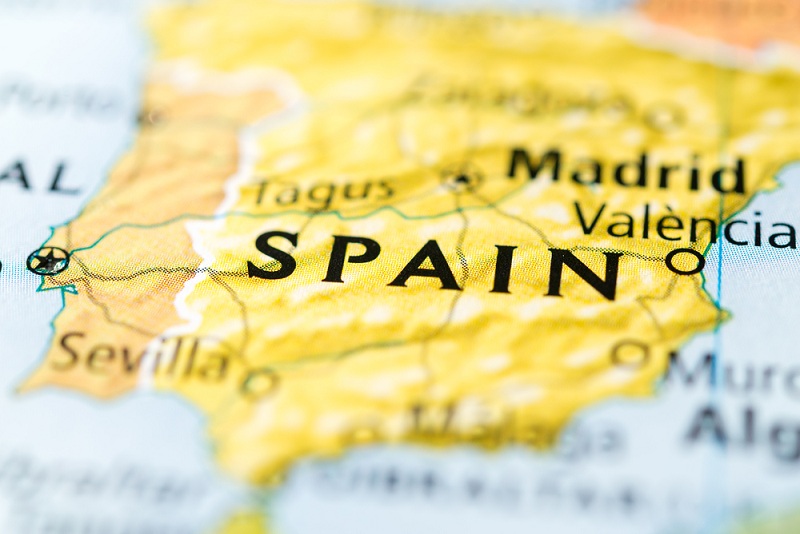
Believe it or not, Spanish isn’t the first language of at least several million Spaniards.
Thankfully, most Spaniards do speak Spanish, so knowing the language will serve you well around the country.
But why not find out about what else is out there?
Broadening your knowledge of Spain’s languages is a great way to expand not only your linguistic knowledge, but also your knowledge of Spanish culture.
This guide will introduce you to ten languages spoken in Spain, along with their history and culture.
Contents
Download:
This blog post is available as a convenient and portable PDF that you
can take anywhere.
Click here to get a copy. (Download)
1. Castilian (Spanish)
Number of Speakers: 45 million
Region: All regions of Spain
The Spanish language is indigenous to Spain’s central region, known as Castilla (Castile). Unlike Spain’s other languages, Spanish is spoken across the entire country.
It’s often called “Castilian” or even “Castilian Spanish” in English. These terms refer exclusively to the dialects of Spanish spoken in Spain. However, the equivalent Spanish-language terms—el castellano (Castilian) and el español (Spanish)—can be used to refer to all dialects of the language.
Nowadays, Castilian Spanish has some unique features that aren’t seen in Latin American dialects. The two most notable are the vosotros form—an informal equivalent to ustedes—and the ceceo, a phenomenon in which the letters c and z are pronounced like th (prompting other Spanish speakers to quip that all Spaniards have lisps).
But rest assured: Spanish is spoken all across the country and your efforts to communicate will be warmly received by Spaniards! A resource like the FluentU language program can boost those communication skills.
2. Catalan
Number of Speakers: 9 million
Region: Catalonia, Valencia and the Balearic Islands in Spain
Though often solely associated with Barcelona, el catalán (Catalan) is spoken in several areas of Spain and southern Europe. Major historical figures who spoke Catalan include artists Gaudí and Dalí.
Catalan is also the sole official language of the tiny country of Andorra and is spoken in small parts of southern France and the Italian city of Alghero.
If you already speak Spanish, learning Catalan will be a walk in the park. The two languages are very closely related, to the point where certain words are identical in both. For example, “la tortuga canta” (the turtle sings) is a valid phrase in both Spanish and Catalan, although you probably won’t ever need to talk about a singing turtle.
Though it suffered from decades of repression under the rule of fascist dictator Francisco Franco, today the Catalan language is once again thriving. It’s taught in schools, can be heard on TV and is currently playing a key role in Catalonia’s independence debate.
Here’s a list of basic vocabulary in Catalan:
Hola
— Hello
Adéu
— Goodbye
Com estàs?
— How are you?
Gràcies
— Thank you
Català
— Catalan
3. Galician
Number of Speakers: 2.4 million
Region: Galicia
Known in Spanish as el gallego, Galician is spoken in the autonomous community of Galicia, the part of Spain located directly north of Portugal.
Perhaps unsurprisingly, the language is very closely related to Portuguese and fairly similar to Spanish by association. In fact, Galician and Portuguese are so close that a movement known as “reintegrationism” has emerged to try to officially unite the two.
Among many other important sites, Galicia is home to Santiago de Compostela, known as the end destination of the Camino de Santiago (Way of Saint James). Most residents of the city are bilingual, so if your Galician isn’t up to scratch, you’ll always have Spanish to fall back on.
4. Basque
Number of Speakers: 700,000
Region: Basque Country in Northern Spain
Sometimes known as el vasco, Basque is spoken in el euskadi (the Basque Country), a region that encompasses parts of both northern Spain and southern France.
Interestingly enough, Basque is a rare example of a “language isolate,“ meaning it isn’t known to be related to any other language. But even though it isn’t related to Spanish, Basque has contributed a large number of Spanish loanwords over the years, including izquierdo/a (left) and cachorro (puppy).
Basque nationalism is a powerful force in the Basque Country. Many locals will look favorably on those willing to take on one of the world’s most difficult languages.
If you’re curious about learning Basque, Ikasten, a website dedicated to Basque instruction, is a good place to start. Here’s a sample vocabulary list:
Kaixo — Hello
Zer moduz? — How are you?
Agur — Goodbye
Eskerrik asko — Thank you
Euskara — Basque
5. Aranese
Number of Speakers: Less than 3,000
Region: Catalonia, especially Val d’Aran
If you know Catalan, then there’s another official language of Spain that you likely already understand—even though you might never have heard of it before!
Aranese is the dialect of Occitan—an endangered language that’s spoken in France as well as parts of Spain and Italy—and it’s very similar to Catalan, to the point that many linguists argue that they’re the same language.
Although Aranese is only spoken by less than 3,000 people in Spain, it’s the official language of Catalonia, which includes Barcelona, Girona, Tarragona and Lleida. Most Aranese speakers are in Val d’Aran, which is a picturesque valley that’s right in the Pyrenees Mountains.
Aranese might be endangered, but it’s doing better than many other Occitan dialects because nearly half of the people in Val D’Aran are fluent in the language! It’s taught in school, and it’s used often in everyday life.
To learn more about Occitan, check out this grammar guide.
Here are some example vocabulary words in Aranese:
Adiu — Hello or goodbye (to one person)
Adishatz — Hello or goodbye (to several people)
Com vas? — How are you?
Merci — Thank you
Aranés — Aranese
6. Asturian
Number of Speakers: 350,000
Region: Asturias
Spoken in Spain’s Asturias directly east of Galicia, el asturiano (Asturian) is a Romance language that shares many similarities with Spanish.
Sadly, Asturian today is an endangered language with just 110,000 native speakers remaining. If you add in people who speak it as a second language, the total would be around 350,000.
Though it does have some protections, Asturian isn’t an official language of Spain. However, its speakers have refused to allow it to fade into oblivion, and large demonstrations—including one in April 2018 that drew thousands of protesters—occasionally occur in support of finally giving Asturian official status.
Here are some essential words in Asturian:
Hola — Hello
¿Cómo tas? — How are you?
Hasta dempués — Goodbye
Gracies — Thank you
Asturies — Asturias
7. Aragonese
Number of Speakers: <10,000
Region: Pyrenean area
Spoken by fewer than 10,000 speakers in the Aragon valleys of the Pyrenees, Aragonese is a Romance language that is very similar to Spanish, Catalan and Occitan. It also shares many similarities with Basque.
Aragonese has four variations—Western Aragonese, Southern Aragonese, Central Aragonese, and Eastern Aragonese.
Unfortunately, it’s considered an endangered language with less than 10,000 of speakers who speak the language while some study it as a second language.
It was once the official language of the Kingdom of Aragon in the 12th century and today Aragonese is used in the far north, rural Pyrenees regions of Aragon.
8. Extremaduran
Number of Speakers: 200,000
Region: Cáceres
Extremaduran, a Romance language, is spoken in western Spain, especially in Extremadura, and extends to parts of Salamanca, Toledo, Ciudad Real, Córdoba, Huelva, and even Barrancos, Portugal.
There are two types: Western and Eastern Extremaduran, the latter influenced more by Spanish. While estimates of speakers vary—200,000 to 1.1 million—it’s mostly used by the older generation, with younger people understanding but not actively using it.
Extremaduran’s written history began in the 16th century with poet Diego Sánchez de Badajoz, and later, in the late 19th century, José María Gabriel y Galán contributed to its literary presence with poems, shaping its cultural significance.
9. Leonese
Number of Speakers: 50,000
Region: León, Zamora and Salamanca
Leonese is a Romance language currently spoken in León, Zamora and Salamanca in Spain, and in a few adjoining areas in Portugal. It is recognized in Spain as a dialect of Astur-Leonese or Asturian-Leonese.
With fewer than 50,000 speakers, Leonese carries the linguistic heritage of this picturesque region. Despite its relatively small speaker base, Leonese holds historical significance, echoing the traditions and cultural identity of the communities that cherish and nurture it.
10. Murcian
Number of Speakers: 500,000
Region: Murcia
In the southeastern corner of Spain, a variant of Peninsular Spanish, Murcian is spoken mainly in the autonomous community of Murcia and the adjacent comarcas of Vega Baja del Segura and Alto Vinalopó in the province of Alicante (Valencia), the corridor of Almansa in Albacete (Castile-La Mancha).
With a speaker base of around 500,000, Murcian encapsulates the cultural essence of the Murcia region.
This language, with its unique linguistic features, reflects the historical and geographical influences that have shaped the identity of Murcia.
While Murcian may not be as widely known as some of its linguistic counterparts, its existence contributes to the linguistic mosaic that adds vibrancy to Spain’s diverse linguistic panorama
While Spain’s linguistic diversity may seem overwhelming, even a few words can go a long way in forging relationships with the local people.
Ultimately, it’s important to see these other languages for what they are: a way to dive deeper into Spain’s fascinating culture.
Check out this post next for a selection of surprising facts about the Spanish language:
Download:
This blog post is available as a convenient and portable PDF that you
can take anywhere.
Click here to get a copy. (Download)
And One More Thing…
If you’ve made it this far that means you probably enjoy learning Spanish with engaging material and will then love FluentU.
Other sites use scripted content. FluentU uses a natural approach that helps you ease into the Spanish language and culture over time. You’ll learn Spanish as it’s actually spoken by real people.
FluentU has a wide variety of videos, as you can see here:
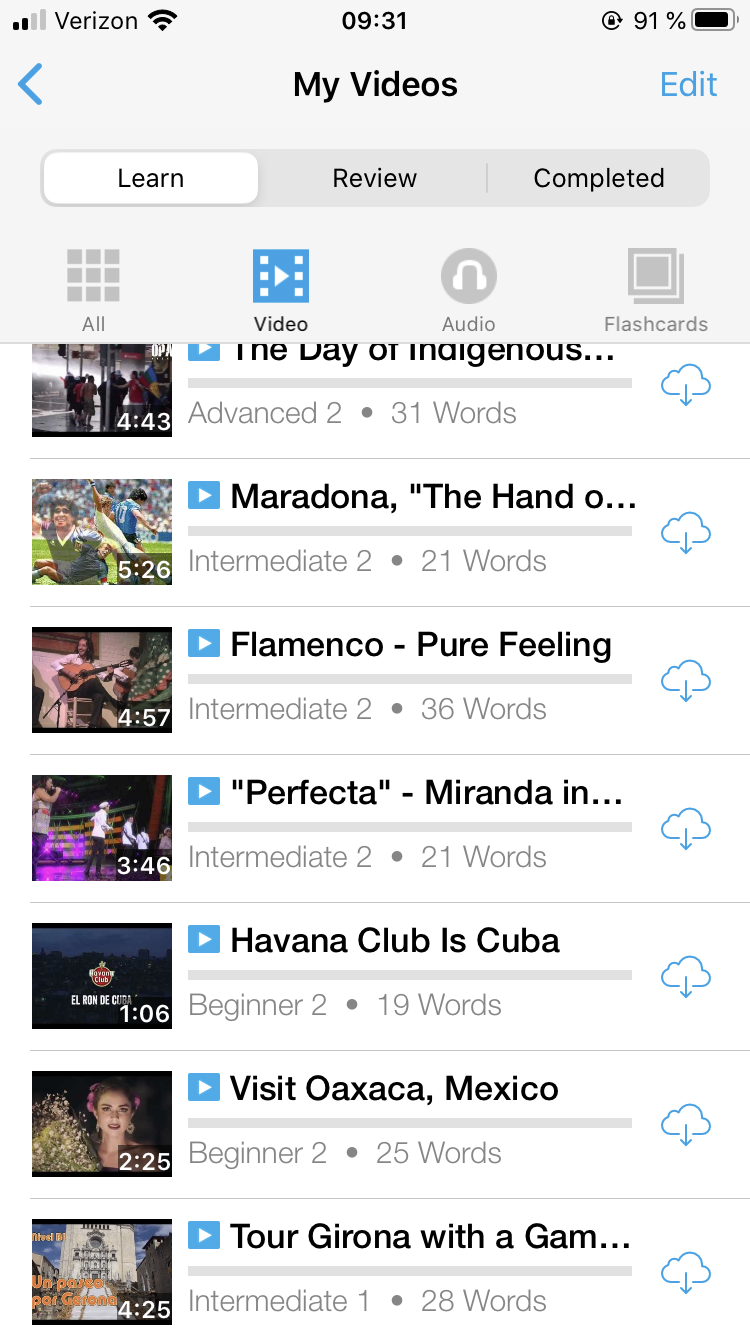
FluentU brings native videos within reach with interactive transcripts. You can tap on any word to look it up instantly. Every definition has examples that have been written to help you understand how the word is used. If you see an interesting word you don’t know, you can add it to a vocab list.
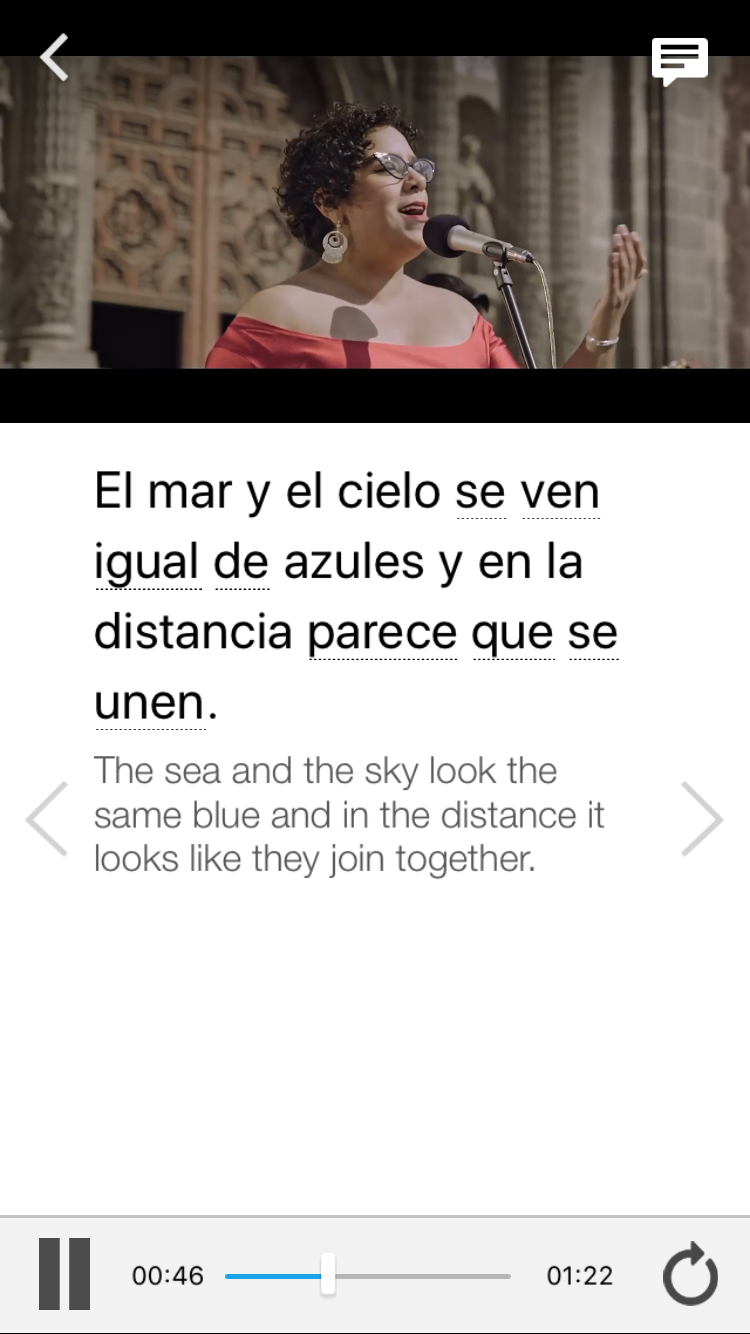
Review a complete interactive transcript under the Dialogue tab, and find words and phrases listed under Vocab.
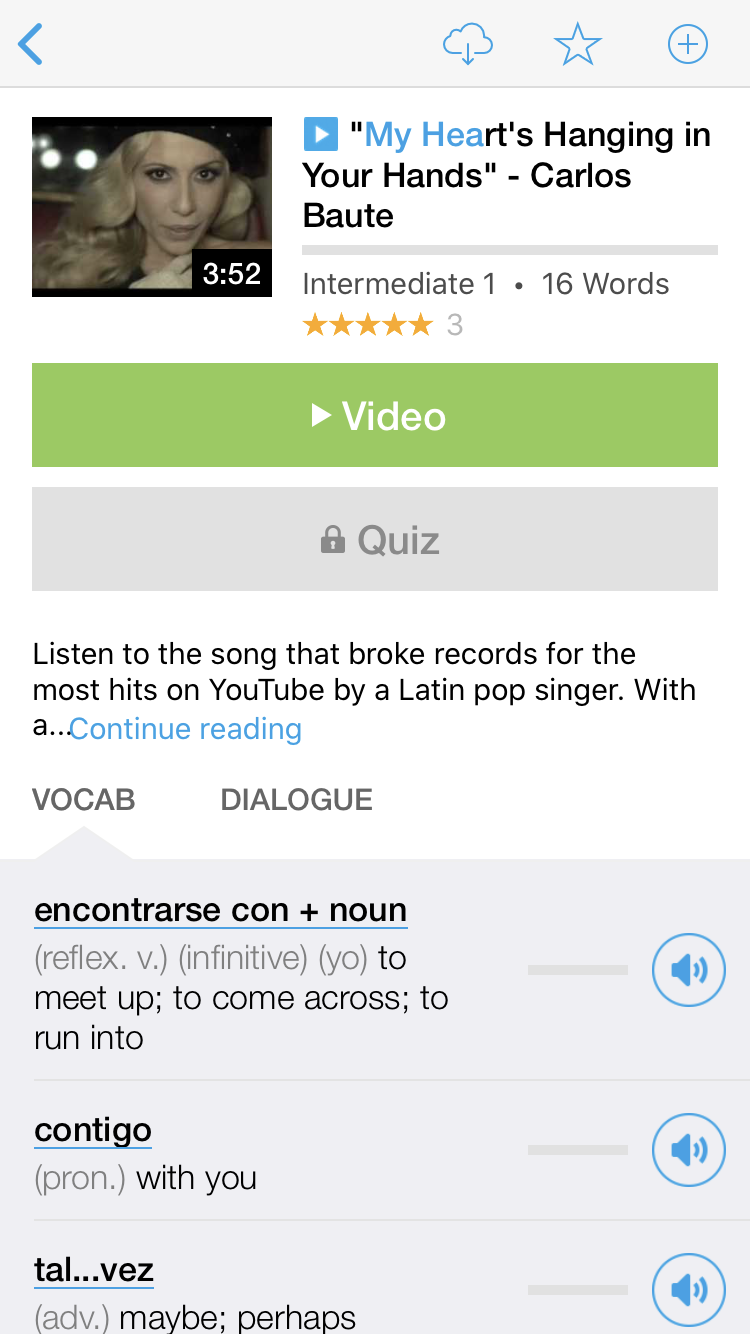
Learn all the vocabulary in any video with FluentU’s robust learning engine. Swipe left or right to see more examples of the word you’re on.
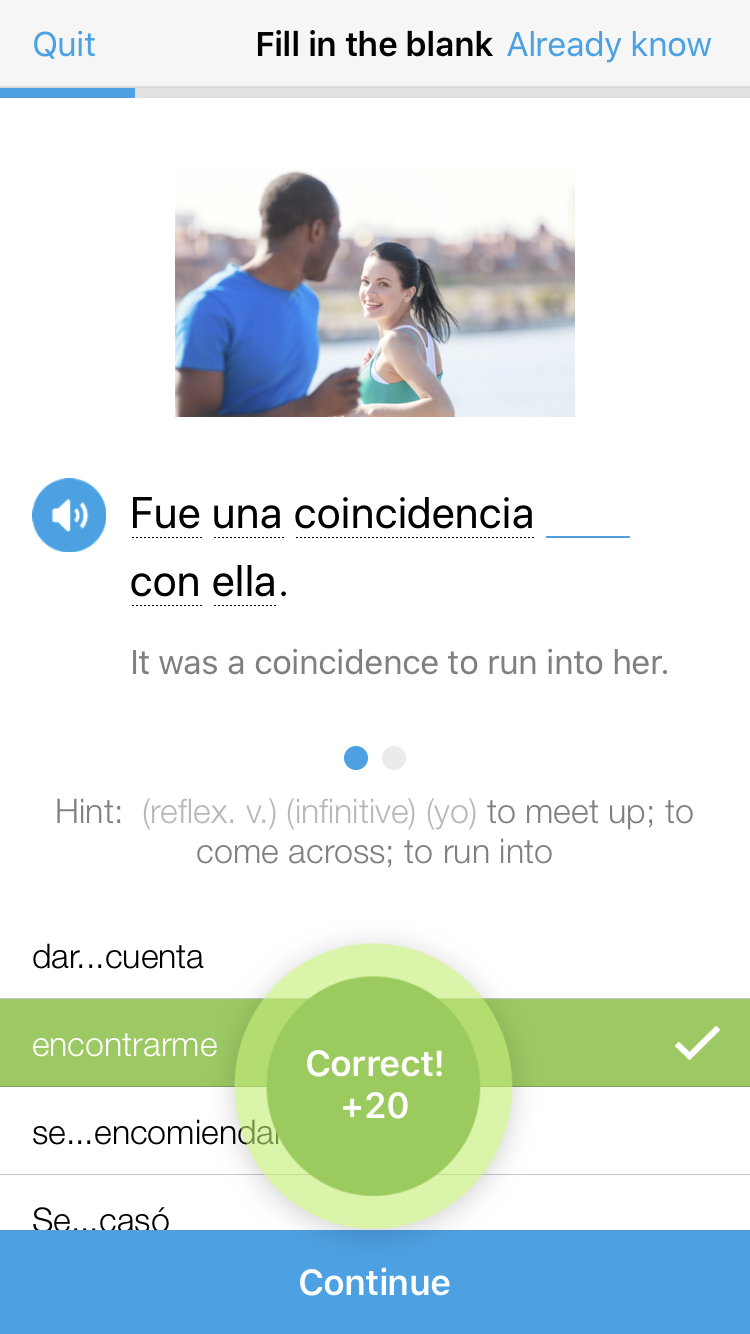
The best part is that FluentU keeps track of the vocabulary that you’re learning, and gives you extra practice with difficult words. It’ll even remind you when it’s time to review what you’ve learned. Every learner has a truly personalized experience, even if they’re learning with the same video.
Start using the FluentU website on your computer or tablet or, better yet, download the FluentU app from the iTunes or Google Play store. All annual subscriptions now on sale!


